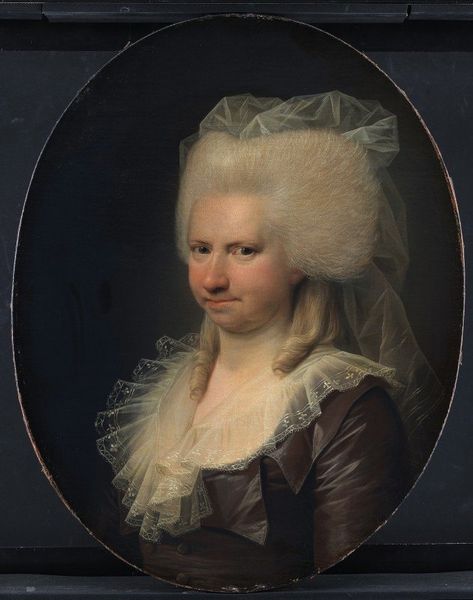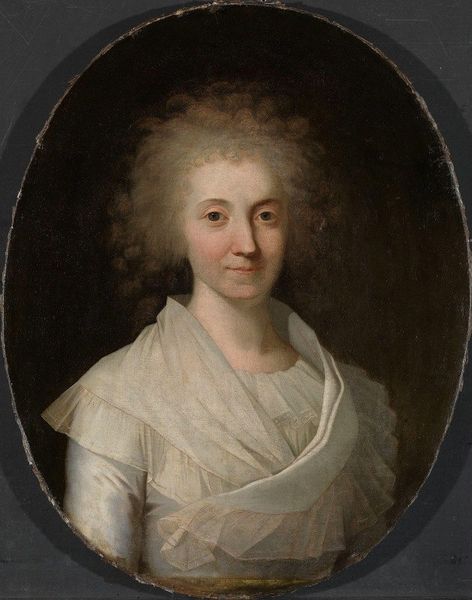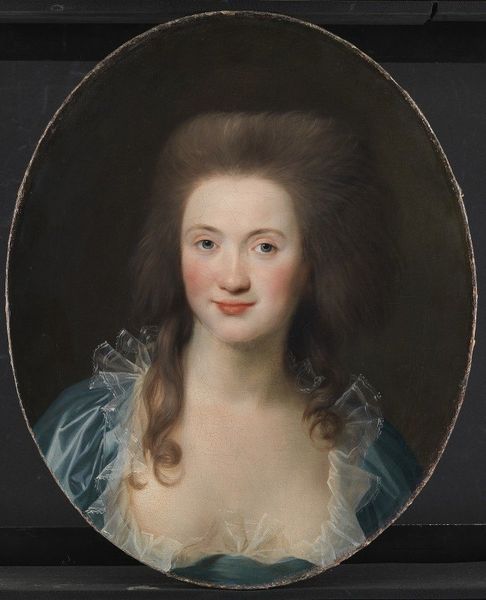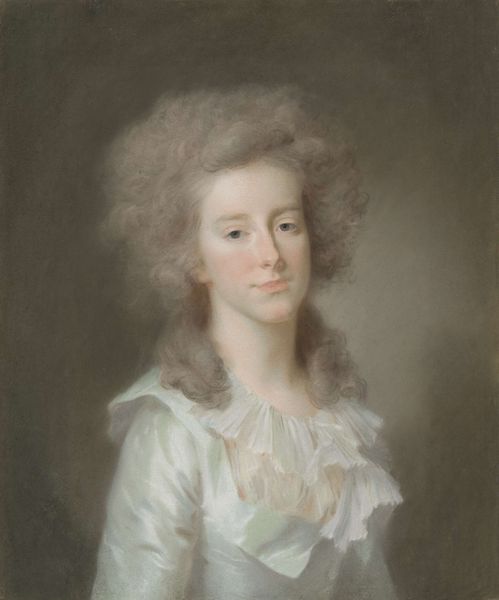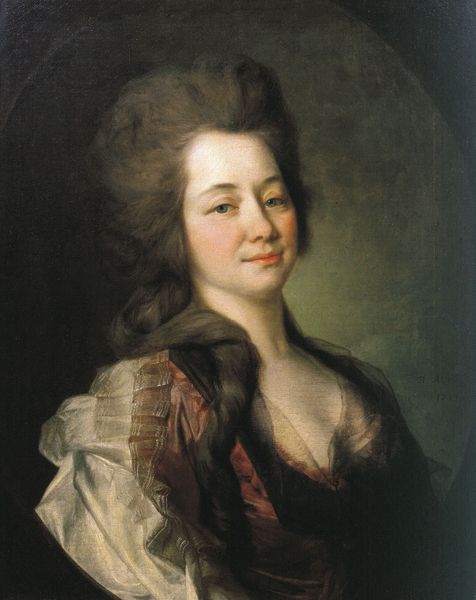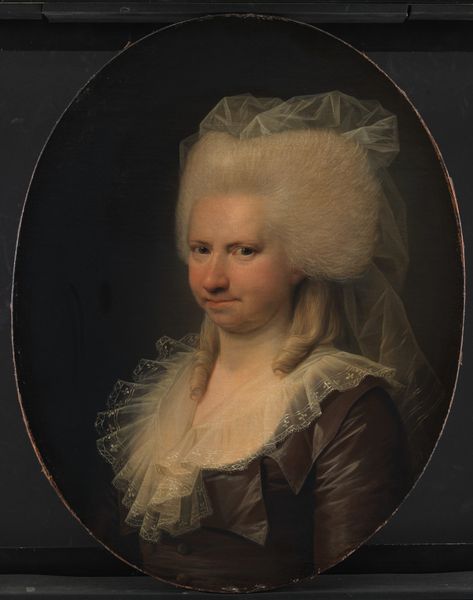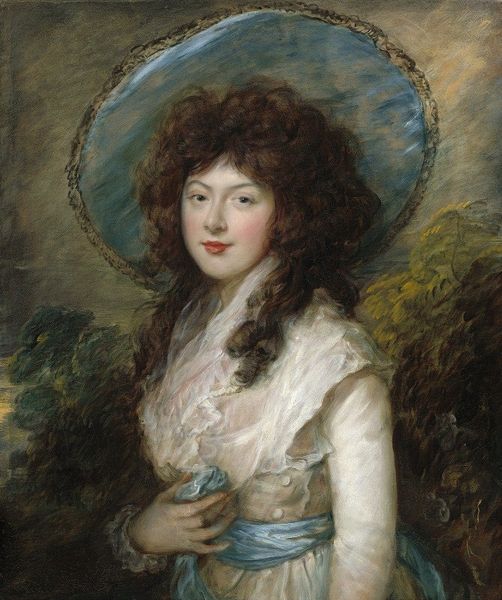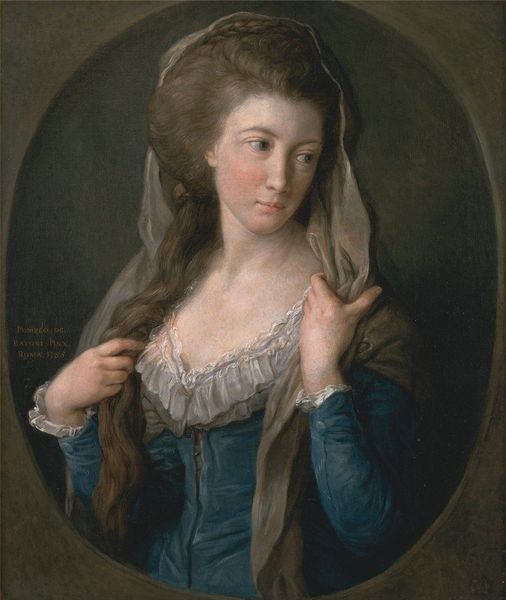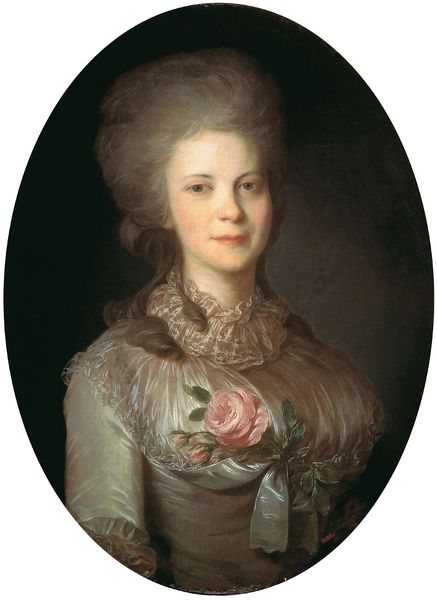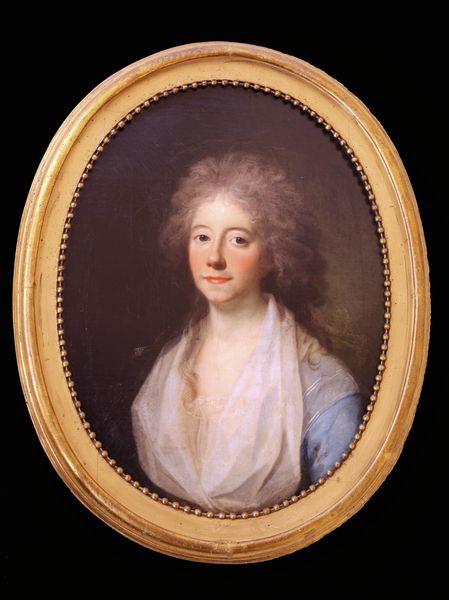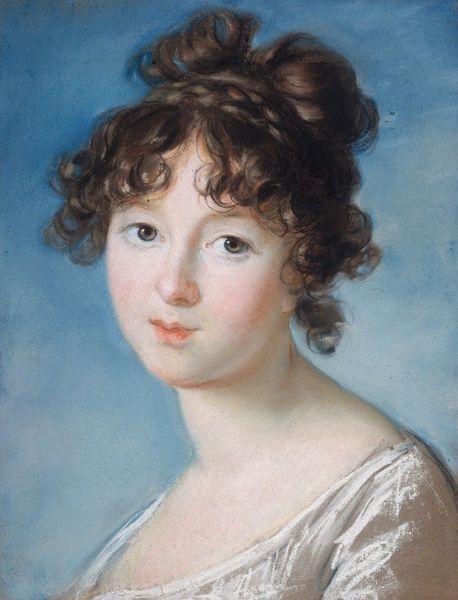
painting
#
portrait
#
figurative
#
painting
#
romanticism
#
portrait drawing
#
genre-painting
Copyright: Public Domain: Artvee
Curator: Oh, there's such immediacy about this work; it has a raw quality. Is this Jens Juel's “Portrait of Wilhelmine Bertouch, Lady-In-Waiting?" painted in the 1790s? Editor: Yes, it is. It strikes me as quite intimate. The softness of the palette feels like a veil, but then the direct gaze breaks the fourth wall. What do you make of the rather... extravagant hair? Curator: The hair definitely speaks to a particular fashion and status, but also perhaps to a wilder Romantic sensibility. It acts as a frame, not just for the face, but almost for the woman herself. Consider how often hair serves as a symbol of vitality and even untamed power across cultures. I see echoes of ancient myths. Editor: That reading makes sense, though to me, the focus on coiffure indicates societal pressures on women's appearances. Her role as Lady-in-Waiting would place her firmly within courtly life, necessitating adherence to fashionable norms as a performance of power. It's interesting that despite these pressures, there’s a relaxed quality that makes it seem she wasn’t completely constrained. Curator: Perhaps it is her intelligence and emotional awareness showing through; that look could launch a thousand ships. But also note the luminosity, the very faint light; pastel handling of light became all the rage across Europe with paintings intended as indicators of good taste and sentimentality among the aristocratic elite. What stories do you read in it? Editor: The luminosity creates a kind of idealization, a sort of halo effect. As for stories, the muted background pulls focus toward her figure. A portrait emphasizes the role of individuals in shaping their historical narratives but obscures some contexts in which Wilhelmine Bertouch lived. As a Lady-in-Waiting she must be observant but mostly unheard—do you see signs of those tensions? Curator: Absolutely, the softness mixed with clarity might speak to a tension you suggest—a dream-like representation of the human as both social signifier, as a body to display a role, and of a unique human presence, of character struggling for, and deserving, some freedom of thought. Editor: I like the idea that both voices meet within the pictorial field: the force of social custom is very clearly visualized but it's not absolute, and is open to various forms of subversion through its interpretation and reception across time. Curator: I agree completely—it gives me much to consider about societal structures and personal expression. Thanks for pointing that out to me! Editor: Likewise. Examining artwork through the lens of iconographic symbolism, alongside social contexts offers enriching viewpoints.
Comments
No comments
Be the first to comment and join the conversation on the ultimate creative platform.
